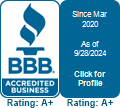
Deciphering the Tactics: How Stores Manipulate You to Overspend
Have you ever walked into a store to buy only “a few things” and returned home with bags full of impulsive, unplanned purchases? You are not alone! Stores employ tactics to entice shoppers and encourage them to open their wallets more than planned.
Listed here are the seven most well-known retail ploys. The next time you go shopping, figure out how to outwit them.
1. Product Placement
The more expensive or high-profit items stores want to promote are shelved at eye level. Spend time looking at the products on the shelves the next time you visit the grocery store. You will likely notice something intriguing: every expensive item is kept almost at eye level. Generic and cheaper products are more likely to be higher or lower, depending on where you are most likely to miss them.
Are you looking for the best offer? Look past the conspicuous items at eye level. Comparable goods will likely be more reasonably priced.
2. Manipulative Pricing Strategies
You may have noticed that prices usually end at .95 or .99. This psychological pricing technique, known as “charm pricing,” tricks our brains into perceiving items as cheaper than they are. Additionally, retailers use tactics like bundling and decoy pricing to create the illusion of a better deal and make shoppers more likely to justify their purchases, even if they weren’t initially planning to buy.
3. Limited-Time Offers
A psychological trigger is FOMO or the fear of missing out. Stores capitalize on this by promoting limited-time deals such as ‘daily deals’, “today only, or “while supplies last” to give the impression that this is your last chance to purchase at heavily discounted clearance prices, which is rarely the case. However, these time-sensitive promotions often lead to impulsive purchases and overspending.
4. “Speed Bumps” To Slow You Down
You may have noticed how essential items, like dairy and meat products, are positioned at the back of the store. That’s not a coincidence! Retailers strategically design the layouts to slow you down, get your attention, and hopefully make impulsive buys before you reach the items you need.
The term “speed bump” is used in retail to describe these tempting displays thoughtfully positioned in the center of crowded aisles. They are unavoidable, especially when you attempt to maneuver your cart around a high stack of products like dish soap, obstructing the aisle.
Make a list before you shop to avoid getting side-tracked and adding unnecessary items to your shopping cart.
5. Oversized Shopping Carts.
Carts are positioned at the storefront to entice you to spend more money. A handheld basket would probably be sufficient for most people, but since the carts are the first thing you see, you’ll probably grab one. Moreover, some retailers even have larger carts than the typical ones.
When pushing a large cart, it is easy to feel like you have room for a few more purchases, even if you got everything you came for. You will add a few extras since you don’t have that much stuff, and the cart is only half full. When you get home, you discover you have wasted an additional $50 on unnecessary junk.
Therefore, if you intend to buy a few things, go with the handheld basket since it won’t leave space for additional impulsive buys. Keep your eyes open for speed bumps and other distractions, and maintain focus if you use a cart.
6. Up-Selling and Cross-Selling Techniques
Have you ever been persuaded to buy a more expensive item or add-on product at the recommendation of a salesperson? That’s up-selling and cross-selling in action. Stores train their staff to suggest complementary products or upgrades to boost sales and increase the average transaction amount.
7. Loyalty Programs and Rewards
Loyalty programs are contrived to incentivize repeat purchases and foster brand loyalty by offering rewards, discounts, or exclusive perks. These programs make customers feel like VIPs, motivate them to make more purchases, and spend more money overall on each transaction.
BOTTOM LINE
Next time you find yourself tempted to overspend while shopping, remember that stores are experts at persuading you to part with your hard-earned money. By being aware of these tactics and sticking to a budget, you can resist impulse purchases and make more intentional buying decisions.
Both your wallet- and your future self will be grateful for it.


